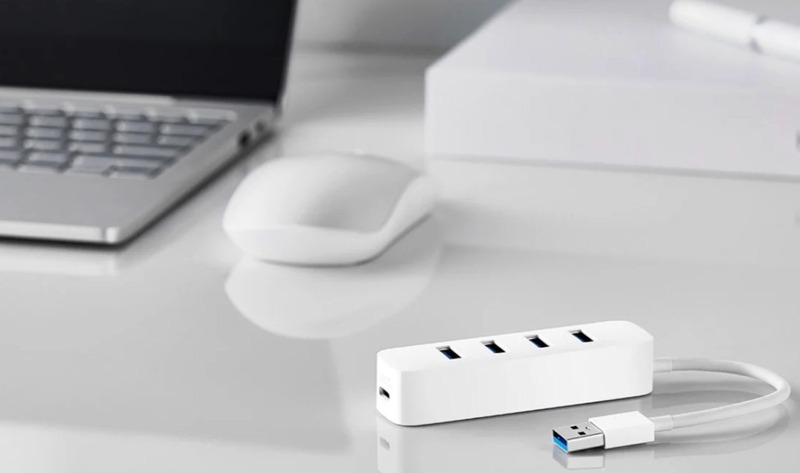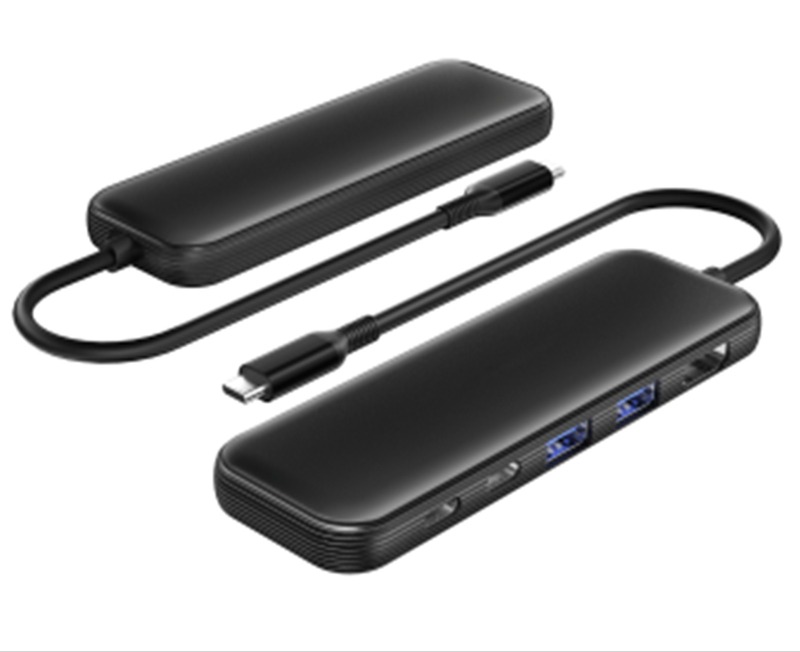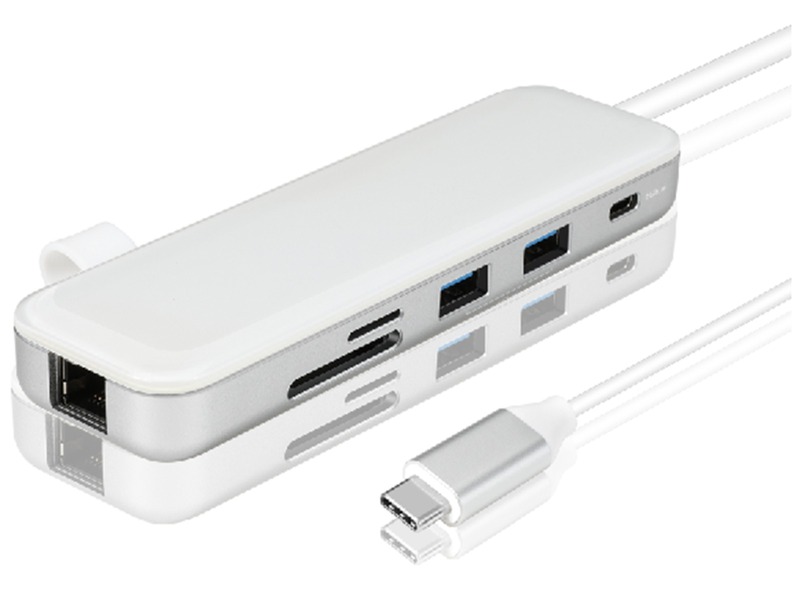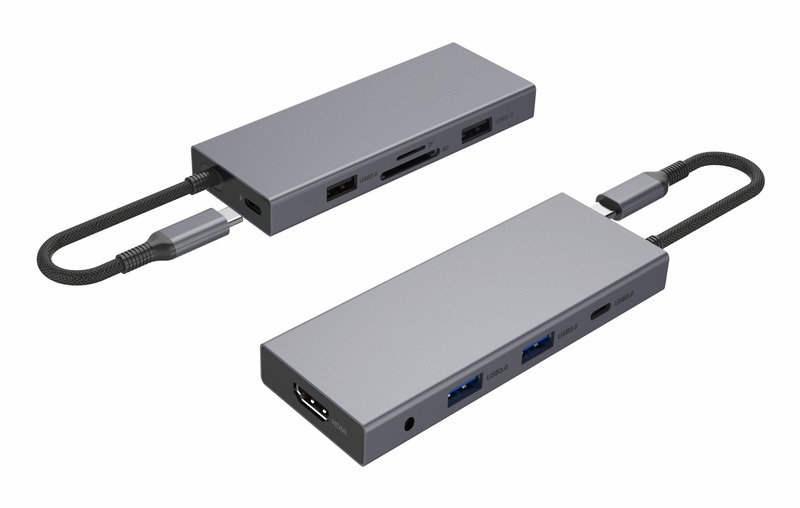USB Hubs
How to use a USB hub properly for beginners
Using a USB hub correctly not only helps you connect multiple devices effectively but also extends the lifespan of the device. However, to achieve optimal performance and avoid issues, it is essential to understand some basic principles when using a USB hub. Read Eili’s article to learn more about how to use a USB hub properly and explore quality products that enhance your connection experience.
What is the purpose of a USB hub?
A USB hub is an expansion device that allows you to connect multiple peripheral devices to a single USB port on your computer. The main purpose of a USB hub is to enable users to easily connect multiple devices such as mice, keyboards, external hard drives, printers, or smartphones without requiring multiple separate USB ports. It is especially useful for devices with limited USB ports or when you need to expand the number of USB ports for different devices. Additionally, USB hubs can also provide power to devices that require energy, such as external hard drives.

How to use a USB hub properly
A USB hub is a convenient tool that helps you connect multiple devices to a single USB port on your computer. However, to use it effectively and avoid issues, you need to know how to connect and operate the device properly. Below is a detailed guide to help you use a USB hub correctly.
Connect the USB hub to the main USB port
Ensure that you plug the USB hub securely into the USB port of your computer or laptop. Typically, a USB hub will have a USB cable for connection, but if the hub has its own power source, you need to connect the power as well. This helps the device function stably and provide sufficient power to the connected devices. After connecting, the system will automatically recognize it, and you can start using it immediately.

Do not connect too many power-hungry devices
Standard USB hubs only draw power from the computer’s USB port to supply the connected devices. If you connect too many high-power devices, such as external hard drives, printers, or other large devices, it may overload the hub, causing devices to malfunction or disconnect. To avoid this, consider connecting only low-power devices or use a hub with its own power supply when necessary.
Use a powered USB hub when needed
If you need to connect many devices that require high power or frequently use devices like external hard drives or printers, it is recommended to choose a powered USB hub. A powered hub will provide stable power to all the connected ports without reducing the performance of your computer. This helps avoid devices not receiving enough power and ensures smooth operation without unexpected disconnections.
Check data transfer speed
Choosing the right USB hub with appropriate data transfer speed is very important, especially when you frequently work with high-speed devices such as external hard drives, cameras, or large data transfer devices. USB hubs supporting USB 3.0 or USB 3.1 can transfer data up to several times faster than USB 2.0, saving time when copying or moving large files. Make sure both your computer and the USB hub support the highest USB standard you need to optimize transfer performance.

Regularly clean the USB hub
The connection ports of the USB hub and computer may accumulate dust and debris over time, affecting the connection quality and reducing performance. To ensure a stable connection, regularly clean the USB hub and the computer’s USB ports using a soft brush or a clean cloth. Be careful not to wet or damage the ports while cleaning, as this could affect data transfer and device connectivity.
Important things to keep in mind when using a USB hub properly
When using a USB hub, there are several key points to pay attention to in order to ensure effective performance and avoid potential issues. Using the hub properly not only ensures stable device connections but also protects the USB hub from unnecessary damage. Below are important things to keep in mind when using a USB hub correctly:
- Choose a quality USB hub: It’s best to choose a USB hub from reputable brands to ensure durability and high performance. Cheap, low-quality hubs may have issues with data transfer speed or be prone to damage.
- Avoid using the hub while moving devices: If the USB hub does not have its own power source, avoid using it while moving devices around too much. This can disrupt the connection or damage both the hub and the connected devices.
- Update drivers and software for the hub: To ensure stable connections and optimal compatibility, check and update the USB hub drivers if necessary. This helps optimize performance and fix software bugs.
- Do not expose the hub to water or moisture: To prevent damage, avoid exposing the USB hub to water or wet environments. Always store the hub in a dry and well-ventilated place.
- Use the hub in a proper temperature environment: Avoid placing the USB hub in areas with extremely high or low temperatures. Improper temperatures can reduce the lifespan of the hub and affect the performance of the connected devices.

Additionally, choosing a quality USB hub is a crucial factor in ensuring long-lasting performance and durability. A high-quality USB hub helps enhance data transfer speed, protect connected devices, and minimize power overload issues. If you’re looking for a reliable solution, Eili’s USB hubs are the ideal choice. With modern designs and superior quality, Eili’s products provide optimal performance for all your connection needs.
Using a USB hub properly not only optimizes connections and protects devices but also ensures stable working performance. To achieve the best results, always choose quality USB hubs and follow the proper usage guidelines. Don’t forget to check out Eili’s USB hubs for the best options for your connection needs.


